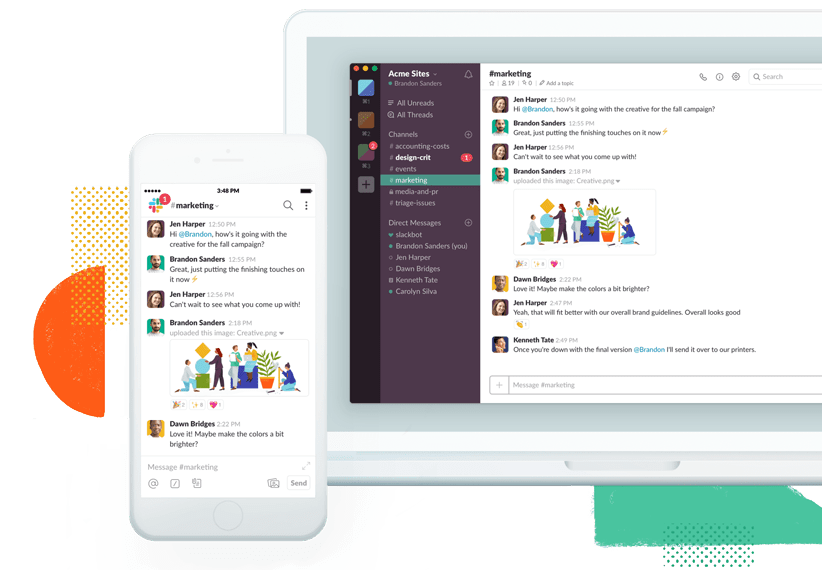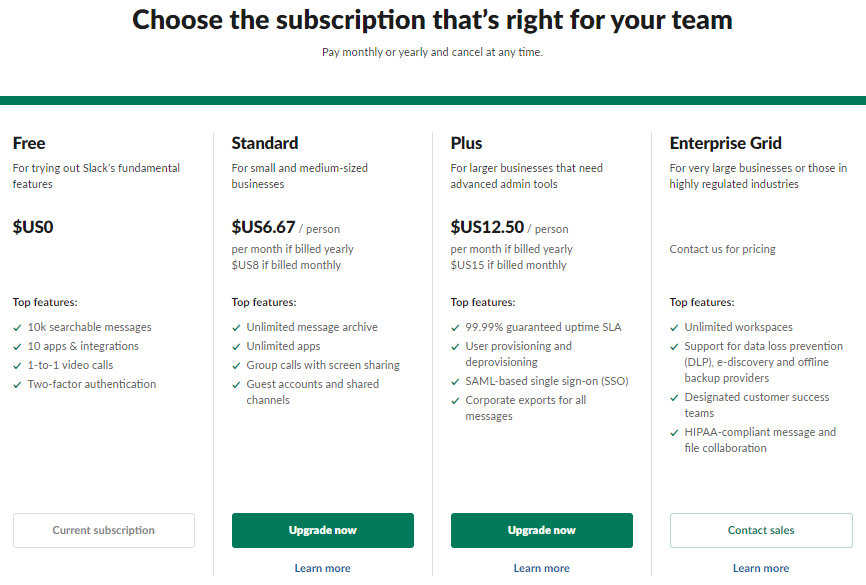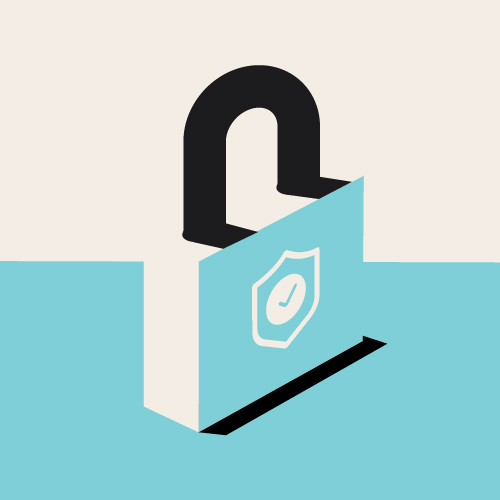
History
Slack is a cloud-based instant messaging platform developed by Slack Technologies. It is a collaborative software that operates through a proprietary system, meaning that it is a closed-source, non-free computer software for which the publisher retains intellectual property rights over the program. Slack was launched to the public in August of 2013 and was created by Stewart Butterfield, Eric Costello, Cal Henderson, and Serguei Mourachov.
The software takes its origin as a personal communication tool for Stewart Butterfield’s company Tiny Speck during the development of Glitch, an online game, in 2011. Stewart Butterfield is a Canadian billionaire businessman best known for his tech ventures, especially for co-founding the photo-sharing website Flickr and now, the messaging application Slack. He developed the messaging program as an internal tool to make co-working communications more efficient and optimizes within his own team. Butterfield’s Tiny Speck is the preceding name to the now Slack Technologies Inc., an international software company founded in 2009 in Vancouver, British Columbia, Canada. It was known as Tiny Speck from 2009 to 2014 as the initial mother company to a computer game called Glitch; a social multiplayer online role-playing game. Glitch first launched in September of 2011 but was effectively shut down in December of 2012. After the closure of Glitch, the company launched Slack for public use. In march of 2015, Slack announced that user data had been compromised following a four-day hack that had occurred in February 2015, exposing them to criticism from the public concerned for the security of users’ private information. Slack became a publicly traded company in April of 2016 with its shares soaring to $21 billion valuation after its debut.
Features
Slack’s goal is to replace emails inside companies, it describes itself as being “the collaborative software that moves work forward” and does so by being a collaborative hub that brings the right people, information and tools together to get work done more efficiently. The name of the company itself is a backronym, a constructed phrase that claims to be the source of a word that is an acronym, for “Searchable Log of All Conversation and Knowledge.” Although simplistic, Slack’s offering is extremely popular amongst the public. Indeed, the software supports over 12 million daily active users, has over 100 thousand premium customers, is used by 65 of the Fortune 100 companies and spans over 150 countries.
Slack brings all teamwork communications together through channels, tools and file sharing in order to help everyone save time and collaborate together more productively. The software offers many Internet Relay Chat (IRC) features such as channels which are co-working chat rooms organized by topic, private groups and direct messaging. Beyond colleagues, Slack offers the possibility to share channels with companies and businesses outside one’s own, like clients, vendors and partners, to bring all the concerned parties into one space. This is presented as a more adaptable alternative to emails. Slack enables users and their partners to customize shared channels and avoid scattered email inboxes. In addition to chatting, the interface allows users to voice or video call a person or group through Slack itself to optimize collaboration from anywhere by using conference calls. This feature also offers the possibility to share computers screens to others. Moreover, the platform has an integrated file sharing system where users can easily drag and drop PDFs, images, videos and other files directly into channels.
Slack allows communities, groups or teams to join a virtual workspace via private URLs or invitations in order to replace emails, messages boards or social media groups on platforms such as Facebook or LinkedIn. Public channels enable individuals to join workspaces to streamline coworking while private channels allow for private conversations between smaller subgroups. Direct messages facilitates one on one conversations or group conversations that are not categorized within channels or specific projects and are kept private to the rest of workspace members.
In Slack, tools and services used within the company can be integrated to the platform in order to make the software even more personalized and optimized for a user. Indeed, the Slack app Directory has over 2000 apps that can be integrated into the platform so users can spend less time juggling tabs and more time focusing on work. Major integrations include apps such as Google, Microsoft, DropBox, Asana, Twitter, Salesforce, WeTransfer and more that are categorized as daily tools, essential apps, new and noteworthy and brilliant bots. In addition, Slack provides an application programming interface (API) for users to create applications and automate processes such as sending automatic notifications based on human input, sending alerts on specified conditions, and automatically creating internal support tickets.
Slack can be used on mobile through their app compatible with iOs and Android as well as their Web browser for macOS, Windows and Linux. The Apple watch is also compatible with Slack and allows people to send direct messages, see mentions and make simple replies. It is a versatile software that can be used in multiple platforms to enhance user experience.

Slack operates under a freemium business model. According to Dijck et al., this type of model provides the basic version of a product or service free of charge, but a premium is charged for additional features and functionality (39). Slack’s main paid features are the ability to search more than 10 000 archived messages and add unlimited apps and integrations within the platform. The pricing increases according to a business’ needs for security, message management, user management and administrative tools. Slack’s first pricing tier is free, its second pricing “standard” tier for small and medium-sized business is $CAD8.82/person per month, its third pricing “plus” tier for larger businesses that need advance administrative tools goes for $CAD16.50/person per month and its “entreprise gris” tier for very large business or those in highly regulated industries goes for a variable price according to the customer’s needs.
Criticism
As previously mentioned, in march of 2015 the collaboration platform announced that it was hacked over the course of four days in February of 2015 and that some number of users’ data was compromised. This data included email addresses, usernames, encrypted passwords and in some cases, phone numbers and Skype IDs that users had associated with their accounts. Slack claims that passwords were sufficiently protected to be unreadable to hackers but also admits that a number of suspicious activity on some of user accounts was detected, which implies that a portion of users’ communication were accessed by the intruders. In response to this, Slack implemented a two-factor authentication feature. This requires users to a one-time passcode to their phones or computer in addition to the usual Slack credentials. Moreover, the platform enabled a password “kill switch” for Slack administrators, allowing them to log out all users of a community and forcing them to reset their passwords.
To this day, Slack users are concerned with the security of their data. The collaborative platform has access to a large amount of information on its users. Not only does it have access to a ton of personal information such names, phone numbers and emails, it also has access to any all communications that were done through the platform, documents included. Indeed, Gebhart and Cohn, writers for the Electronic Frontier Foundation, cautioned that “Slack stores and is able to read all of your communications, as well as identifying information for everyone in your workspace.” Although the company follows several security practices in order to ensure the safety of their users’ data, a company with such an immense amount of private data stored is sure to be scrutinized by those at risk.

In addition, Slack has been criticized by users for storing user data exclusively on cloud servers under the company’s control. Not only does this expose users to potential risk in terms of hacking as seen in the past, it also is the reason for many user experience issues. Indeed, Slack users with large teams have experienced issues with connectivity with the app and have limitations when trying to access archived messages. Slack’s reliability on the cloud may reduce the platform’s reliability and efficiency, thus compromising their reputation within its user-base.
In 2018, Slack was publicly criticized for changing its privacy policy enabling administrators to export all the data shared through the workspace, including private direct messages. Slack’s updated privacy policy and tools was to comply with General Data Protection Regulation (GDPR) rules that grants admins access to a self-service tool for exporting data from all public and private channels without notifying concerned parties.
Overall, Slack is a very practical tool for anyone looking to enhance productivity within collaborative environments. It is a social media in the sense that the platform is user centered and aims at facilitating communal activities and human collaboration. It is an online facilitator and enhancer of human networks made up of webs of people that promote connectedness (Dijck 11). The online social platform optimizes communication by offering a platform that fosters the organization of public and private interactions between coworkers. Just like any other social media platform, it has access to a dangerously large amount of private data on its users. This means that Slack will always be criticized for the way in which it decides to store this data as well as what they choose to do with it. As far as it is publicly known, Slack has not ventured into the profitable data-selling market but has fallen victim to hackers trying to access this valuable asset. The company’s ethos is centered around protecting their users’ data as if it were its own, working to make sure requirements and expectations are exceeded. By doing so, Slack stays true to its promise of being the collaborative software that moves work forward into the future of technology and social media.
Works Cited
Dijick, José Van, et al. The Platform Society: Public Values in a Connective World. Oxford University Press, 2018.

0 comments on “Slack: Where Work Happens”